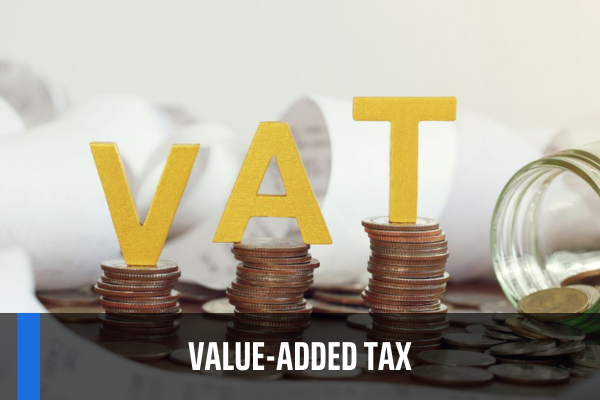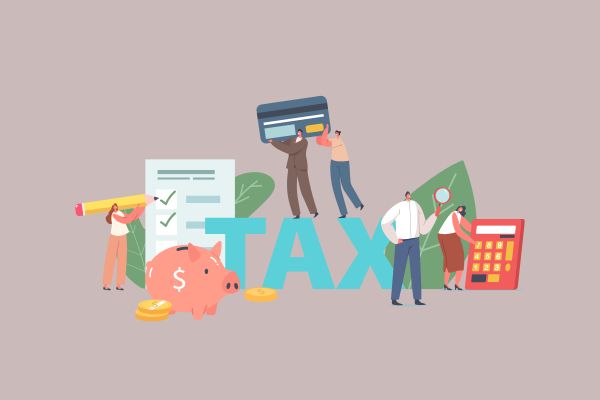Vietnam: What is value-added tax? What are the current VAT rates? Where to pay VAT?
What is value-added tax?
Pursuant to the provisions of Article 2 of the Law on value-added tax 2008, the definition of VAT is as follows:
Value-added tax
Value-added tax is a tax imposed on the added value of goods or services arising in the process from production, circulation to consumption.
By definition, value-added tax is a tax imposed on the added value of goods or services arising in the process from production, circulation to consumption.

Vietnam: What is value-added tax? What are the current VAT rates? Where to pay VAT?
What are the current VAT rates in Vietnam ?
Pursuant to Article 8 of the Law on value-added tax 2008 (amended by Clause 3, Article 1 of the Law on amendments to the Law on value-added tax in 2013, Article 1 of the Law on amendments to some Articles of the Law on Value-added tax, the Law on special excise duty, and the Law on Tax administration 2016, Article 3 of the Law on amendments to tax Laws 2014) and the Decree regulating VAT rates as follows:
(1) The tax rate of 0% is applicable to exported goods and services, international transport, goods and services that are not subject to VAT according to Article 5 of this Law when they are exported, except for the cases below:
- Transferring technologies, transferring intellectual property rights abroad;
- Reinsurance abroad;
- Credit services;
- Capital transfer;
- Derivative financial services;
- Telecommunications and postal services;
- Exported products being resources or minerals that are no processed into other products according to Clause 23 Article 5 of this Law.
Exported goods and services being sold outside Vietnam, in non-tariff zones; goods and services provided for foreigners according to the Government’s regulations.
(2) The tax rate of 5% applies to the following goods and services:
- Clean water for production and daily life;
- Ores for production of fertilizers; pesticides, and growth stimulants for animals, plants;
- Services of digging, embanking and dredging canals, ditches, ponds and lakes for agricultural production; growing, tending, and preventing pests and insects for, plants; preliminary processing and preservation of agricultural products;
- Unprocessed cultivation, husbandry and fishery products, except products specified in Clause 1, Article 5 of this Law;
- Preliminarily processed rubber latex; preliminarily processed turpentine; nets, main ropes and fibers for making fishing-nets;
- Fresh and live food; unprocessed forest products, except timber, bamboo shoots and products specified in Clause 1, Article 5 of this Law;
- Sugar; by-products in sugar production, including molasses, bagasse and sludge;
- Products made of jute, rush, bamboo, leaf, straw, coconut husks and shells and Eichhornia crassipes, and other handicrafts made of agricultural raw materials; preliminarily processed cotton; paper for newspaper printing;
- Special-purpose machinery and equipment for agricultural production, including ploughing machines, harrowing machines, rice-planting machines, seeding machines, rice-plucking machines, reaping machines, combine harvesters, agricultural product harvesters, insecticide or pesticide pumps or sprayers;
- Teaching and learning aids, including models, figures, boards, chalk, rulers, compasses, and equipment and tools exclusively used for teaching, research and scientific experiments;
- Cultural, exhibition, physical training and sports activities; art performances; film production; film import, distribution and screening;
- Children toys; books of all kinds, except books specified in Clause 15, Article 5 of this Law;
- Scientific and technological services under the Law on Science and Technology.
- Sale, lease, and hire purchase of social housing according to the Law on Housing
(3) The 10% tax rate applies to goods and services that are not subject to the 0% and 5% tax rates.
(4) The tax rate of 8% applies from July 1, 2023 to December 31, 2023, specifically:
At the 5th Session of the XV National Assembly on June 24, 2023, the National Assembly approved a 2% reduction in value added tax for groups of goods and services currently applying the 10% value added tax rate to 8%, except for some of the following groups of goods and services:
- Group of goods, telecommunications services, information technology,
- Group of goods and services for financial, banking, securities activities,
- Group of goods and insurance services,
- Group of goods and real estate business services,
- Group of metal goods and services, prefabricated metal products, mining products (excluding coal mining), coke, refined petroleum, chemical products, commodity products
- Group of services subject to special consumption tax;
Thus, depending on each taxable subject, the applied value-added tax rate is 0%, 5%, 10% or 8%.
Where are the places to pay VAT in Vietnam?
Pursuant to Article 20 of Circular 219/2013/TT-BTC, regulations on places to pay VAT in Vietnam are as follows:
Places to pay tax
1. Taxpayer shall declare and pay VAT in the locality where the business is situated.
2. If the taxpayer that pays VAT using credit-invoice method has a financially dependent manufacturing facility in a province other than the province where the headquarter is situated, VAT shall be paid in both provinces.
3. If a company or cooperative that uses direct method has a manufacturing facility in a province other than that where the headquarter is situated, or engages in extraprovincial sale, the company or cooperative shall pay direct VAT on the revenue earned from extraprovincial sale in the province where the sale is made. The company or cooperative is not required to pay direct VAT on such revenue, which has been declared at paid, at the headquarter
4. When a provider of telecommunications services provides postpaid telecommunications services in a province other than the province where their headquarter is situated, and establish a financially dependent branch that pays VAT using credit-invoice method and also provides postpaid telecommunications services in that same province, the provider of telecommunications services shall declare and pay VAT on postpaid telecommunications services as follows:
- VAT on the total revenue from provision of postpaid telecommunications services of the provide shall be declared at the supervisory tax authority of the headquarter.
- VAT shall be paid in the provinces where the headquarter and the branch are situated.
Direct VAT shall be paid at 2% of the revenue from telecommunications services provided in the province where the branch is situated (postpaid telecommunications services are subject to 10% tax)
5. VAT shall be declared and paid in accordance with the Law on Tax administration and its guiding documents.
Thus, taxpayers declare and pay value added tax in the locality where they do business. Based on the actual operating situation, determine the appropriate value added tax payment location according to the above regulations.
LawNet
